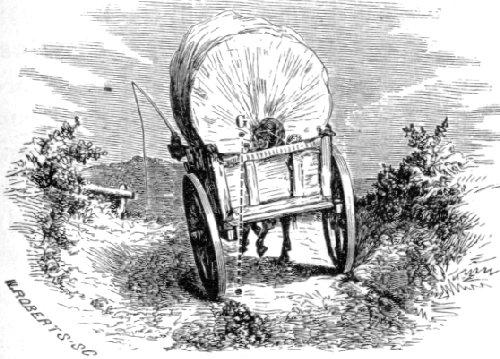Of Books and Learning
Today, thoughts on books and learning. The University of Houston's College of Engineering presents this series about the machines that make our civilization run, and the people whose ingenuity created them.
As I haunt old bookstores, I see more and more of an almost secret nineteenth-century literature. That century began with the invention of the new fast presses and new means for making cheap paper. The result was the creation of a whole array of inexpensive textbooks. These books were not particularly durable, and they were heavily used. Copies that survive are usually in poor condition. High-end booksellers won't touch them, and few libraries want textbooks in any case. They are the Ishmaels of the book world.
Yet this literature, more than any other of the period, redirected civilization. Any energetic young person could gain book-learning, and so many did! Here in America this new wave of inexpensive books was followed by a second major step toward creating an educated public. That was the creation of a system of free state universities under the Morrill Act of 1862.
But the books came first; America was built on cheap textbooks. Here are two, one British, one American, that underscore the situation. Both deal with what we call physics. The British one, Theoretical Mechanics, was in its fourth edition by 1894. It'd served a generation of students preparing for a national examination in mechanics. The American book on Natural Philosophy first appeared in 1871. It's a remarkably complete, accurate, and clear discussion of essential physical processes, aimed at high-school-level readers. The illustrations are lush and inviting.
 The timeframe of the American book is disconcerting. A covered wagon lurching on a dirt road illustrates centers of gravity. A pioneer, bending to drink water from a lake, illustrates optical distortion. This book was still being reissued at the end of the nineteenth century, and we wonder when this one was printed. It explains the new telephones and phonographs along with Watt's engines. It reflects a country that is finding and defining itself.
The timeframe of the American book is disconcerting. A covered wagon lurching on a dirt road illustrates centers of gravity. A pioneer, bending to drink water from a lake, illustrates optical distortion. This book was still being reissued at the end of the nineteenth century, and we wonder when this one was printed. It explains the new telephones and phonographs along with Watt's engines. It reflects a country that is finding and defining itself.
The British book stands in marked contrast. It's written for students who've already been to college. One quarter of the book is devoted to example questions. The author finds matters of dimensions and units to be confusing, and he shares his confusion with his readers. The joy seems to've gone out of the subject. This, after all, is really about examinations, not about physics.
The author of the American book, Le Roy Cooley, was a product of the New York Normal School and Union College. He wrote this book while he taught at various normal schools and seminaries. Then, in 1874, the new Vassar College for women called 41-year-old Cooley to be chair of its physics and chemistry department. For now a full college education was opening to women as well.
We were a glorious tabula rasa in those days, and learning was a wide-open enterprise. Do you want to know who we were in the nineteenth century? Then seek out these old books. For America was a learned country long before it was an educated country.
I'm John Lienhard, at the University of Houston, where we're interested in the way inventive minds work.
(Theme music)
Cooley, L. R. C., Natural Philosophy for Common and High Schools. New York: Scribner's Sons, 1871. (Subsequent editions of this book were issued in 1874, 1881, and 1899. Owing to some of the technology in the book, it must be a later edition despite the fact that it bears the date of 1871.)
Pinkerton, R. H., Theoretical Mechanics: Including hydrostatics and Pneumatics. Fourth Edition, London: Blackie & Son, Ltd., 1894. (This book has left no tracks. No library has previously catalogued any edition of it, and I cannot determine just when it was first issued.)

Cooley's image of a covered wagon. The wagon is still stable, even though it is badly-tilted and its load is off-center. That is because the line through its center of gravity is still inside the left-hand wheel.